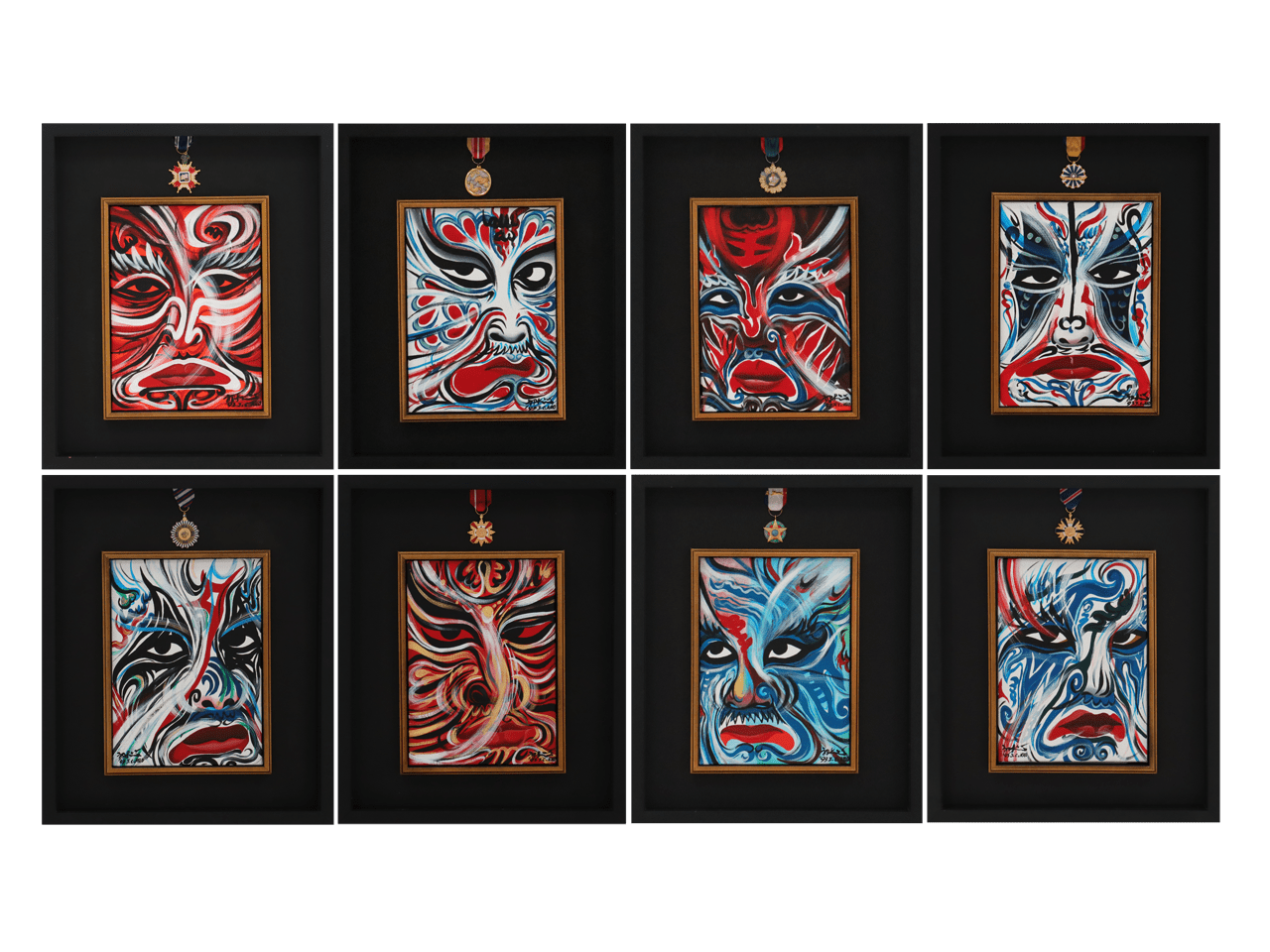Kuo invoked the metaphor of gender to represent the interpersonal relationship in Taiwanese society, be it between man and woman, between men, or among multiple people. It can be romance, nightlife affair, open fight and covert maneuver with mutual deception, or a naked and unequal power relationship.
Kuo’s works in this period featured the extension of composition from the canvas to the frame. Inspired by the traditional temple architecture in Taiwan, he applied the style of folk wood carvings to the frames of his paintings and colored them primarily in red, blue and green, which evoked strong political associations.

J. C. Kuo’s oeuvre tends to be sharply critical in style with common and direct artistic expression, addressing contemporary issues (e.g., the gap between haves and have-nots, excessive consumption, religious myths, the decline of traditional cultures, the interpersonal estrangement, and the rampant popular media) arising from the political development after the lifting of martial law and the social change induced by the economic boom in Taiwan.

